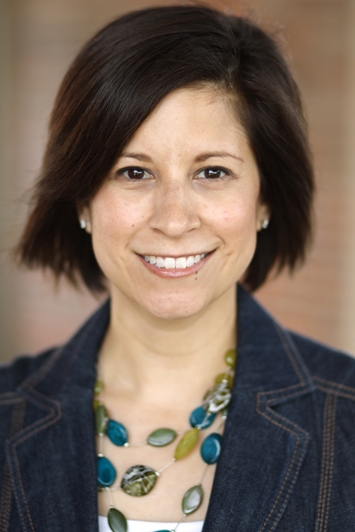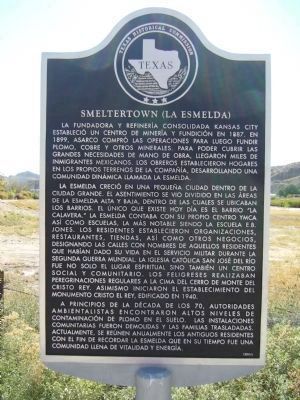Share
Collective Memories
An Interview with the Author of Smeltertown: Monica Perales
Raymundo Eli Rojas (Rojas): Dr. Perales, for those who are unfamiliar with you and your works and research, can you tell us a little bit about yourself? Where were you born and raised? Education? Where are you living now? Anything else you want to share.
Monica Perales: I was born in Tucson, Arizona, spent my childhood in Phoenix, but El Paso was always a big part of my life. Since my grandparents and much of my extended family lived in El Paso, we spent a lot of our time there – holidays, summer vacations. My family moved back to El Paso in 1986, just before I started high school, and it is the place I consider to be “home.” I now live in Houston – I’ve been here 7 years now – and teach at the University of Houston.
I graduated from Coronado High School in 1990, and received my BA (in Journalism, 1994) and MA (in History, 1996) from UTEP, before moving on to get my Ph.D. at Stanford (2004).
Rojas: What made you want to become a historian?
Perales: I guess I was always interested in history. I had excellent professors at UTEP who inspired me, and taught me that history was more than a collection of dates and names. One of my professors defined history in this way: “History is the stories people tell to give themselves a sense of identity.” It is something that motivates me to this day.
Rojas: Which scholars have been your mentors?
Perales: I hate to single any one person out, because I have been really lucky that some great scholars have really taken an interest in mentoring me over the years.
Rojas: Can you tell us about your new book Smeltertown: Making and Remembering A Southwest Border Community (University of North Carolina Press)?
Perales: My book explores the birth, evolution, demise and collective memory of Smeltertown from the perspective of those who built it: generations of Mexican and Mexican American workers and their families. What I argue is that Smeltertown was not a place that just “existed,” but rather was a place that had to be made and remade by different groups of people, at different points in time.
My goal was to explore the multiple meanings of this place, and how people created a sense of community through local institutions like the church, the schools, the workplace. At its heart, it is a study of community and families, one that I hope is honest as it also honors the place that so many people have such strong ties to, even today.
 |
| Part of Smeltertown |
Rojas: I was a fan of your of both your masters thesis and your Ph.D. Dissertation, how much of you life have you devoted to getting this book to print?
Perales: The very first paper I wrote on Smeltertown was for a class on the American West in 1995. Of course not all of my coursework was directly related to Smeltertown research, but it has been with me for the better part of 15 years.
Rojas: Smeltertown and the Buena Vista community remain one of the most connected despite the diaspora of it residents. Why do you think this has occurred?
Perales: I think a lot has to do with the very long and deep roots people have to those places – we’re talking about generations of families that are related by blood and kinship. Additionally, we have to consider what community means to people.
It isn’t proximity to one’s neighbors that makes a community, but rather experiences, commonalities, and sometimes conflicts define communities. Communities are also support networks, and these networks were essential for survival, particularly for working-class families in the early years of the 20th century.
These days you hear a lot about “planned communities,” but you can’t manufacture the kinds of ties folks from Smeltertown and Buena Vista share historically.
Rojas: Your book is one of the first books to focus on Chicanos outside of the Segundo Barrio. I'm not downplaying Segundo with my question, but why do you think it is important for us to write about the histories of our barrios?
Perales: Segundo Barrio is a vital part of El Paso’s history, and it is important that we not forget that. It was the largest Mexican neighborhood, and it has such rich stories to tell.
But what I think Smeltertown shows us is that the experiences of El Paso’s mexicanos were incredibly diverse. Segundo Barrio had all of the hallmarks of urban barrio life and was so close to downtown – Smeltertown was essentially a company town on the far outskirts of town for many years. Their (Smeltertown residents) lives were shaped by the immediate proximity of industry. Add that to the different experiences of folks living in Stormsville or Ysleta or the upper valley . . . this only makes El Paso’s history more interesting. Mexican life in the borderlands was not just one thing.
Rojas: Do you have any feature research project regarding El Paso?
Perales: My research interests remain connected to the border. My current project evolved from my work on Americanization in El Paso at the turn of the 20th century, and looks at perceptions of Mexican mothers on the border. I think El Paso will always be a part of my work.
 |
| Dr. Monica Perales. Photo: University of Houston |
Rojas: What does your family think of your writing?
Perales: My family has been my greatest support. Three of my grandparents were born in Smeltertown, and a fourth moved there when she was a child, at the height of the Mexican Revolution. They all appear in the book. They never had the chance to read what I wrote, but writing this book gave me the chance to know them in ways I could never have imagined.
My parents and sister all contributed in countless ways to the project itself, but also in just encouraging me along the way. They all told me that they enjoyed reading the book and said it wasn’t as dry as some history books can be – and I didn’t even pay them to say that!
My husband was really supportive in the closing stages – he’s not from El Paso, but says that when we visit, he appreciates the city more, now that he knows a little more about its history.
Rojas: What can you tell us about Recovering the Hispanic History of Texas (Arte Publico Press)?
Perales: This book I edited with my colleague and good friend Raul Ramos, who also teaches at the University of Houston. It is a collection of essays initially presented at the Texas State Historical Association Annual Conference in Corpus Christi in 2008 (The TSHA will be meeting in El Paso in Spring 2011). There are pieces by established and up and coming scholars.
We are really proud of the collection, which represents some of the most cutting edge work on Mexicans in Texas. The authors are really pushing us to think about Texas history in a new way, asking new questions, and using fresh perspectives.
Rojas: What are you currently reading?
Perales: These days I’m gearing up for the Spring semester, so my reading is focused on preparing for my upcoming classes. I’ve just started reading Cynthia E. Orozco’s history of LULAC, No Mexicans, Women, or Dogs Allowed: The Rise of the Mexican American Civil Rights Movement (Austin: University of Texas Press, 2009).
I also recently started Isabel Wilkerson’s The Warmth of Other Suns, a beautifully written and highly acclaimed book on the African American Great Migration. I think that it will really help me think about my own research interests in new ways.
Rojas: Can you share with our readers your favorite TV show and the last movie you saw?
Perales: I probably watch more television than I should admit to. I’m a huge fan of smart writing. I was really happy to see "Glee" win best comedy series at last night’s Golden Globes. It has been a long while since I’ve been to the movies. The last one I saw might have been "The Kids are All Right."
Rojas: Dr. Perales, thank you for this interview and congratulations on the recent books.
FIN
For previous posts on Smeltertown, La Calavera, Buena Vista, check HERE.












No comments:
Post a Comment